We’re working on a project with Washington Department of Natural Resources’ (DNR) Micah Horwith to identify potential proteomic biomarkers in geoduck (Panopea generosa) and Pacific oyster (Crassostrea gigas). One aspect of the project is how to best conduct sampling of juvenile geoduck (Panopea generosa) and Pacific oyster (Crassostrea gigas) to minimize changes in the proteome of ctenidia tissue during sampling. Generally, live animals are shucked, tissue dissected, and then the tissue is “snap” frozen. However, Micah’s crew will be collecting animals from wild sites around Puget Sound and, because of the remote locations and the means of collection, will have limited tools and time to perform this type of sampling. Time is a significant component that will have great impact on proteomic status in each individual.
As such, Micah and crew wanted to try out a different means of sampling that would help preserve the state of the proteome at the time of collection. Micah and crew have collected some juveniles of both species and “snap” frozen them in the field in a dry ice/ethanol bath in hopes of being able to best preserve the ctenidia proteome status. I’m attempting to dissect out the frozen ctenidia tissue from both types of animals and am reporting on the success/failure of this method of preservation-sampling protocol.
To test this, I transferred animals (contained in baggies) from the -80C to dry ice. Utensils and weigh boats were cooled on dry ice.
Results:
Quick summary: This method won’t and I think sampling will have to take place in the field.
The details of why this won’t work (along with images of the process) are below.
First issue with this sampling method (and should be noted because I believe dry ice/ethanol baths will be used, even with a different sampling methodology) is that the ethanol in the dry ice bath at the time of animal collection is a potential problem for labeling baggies. Notice in the screenshot below that the label for the geoduck baggie (the baggie on the left) has, for all intents and purposes, completely washed off:
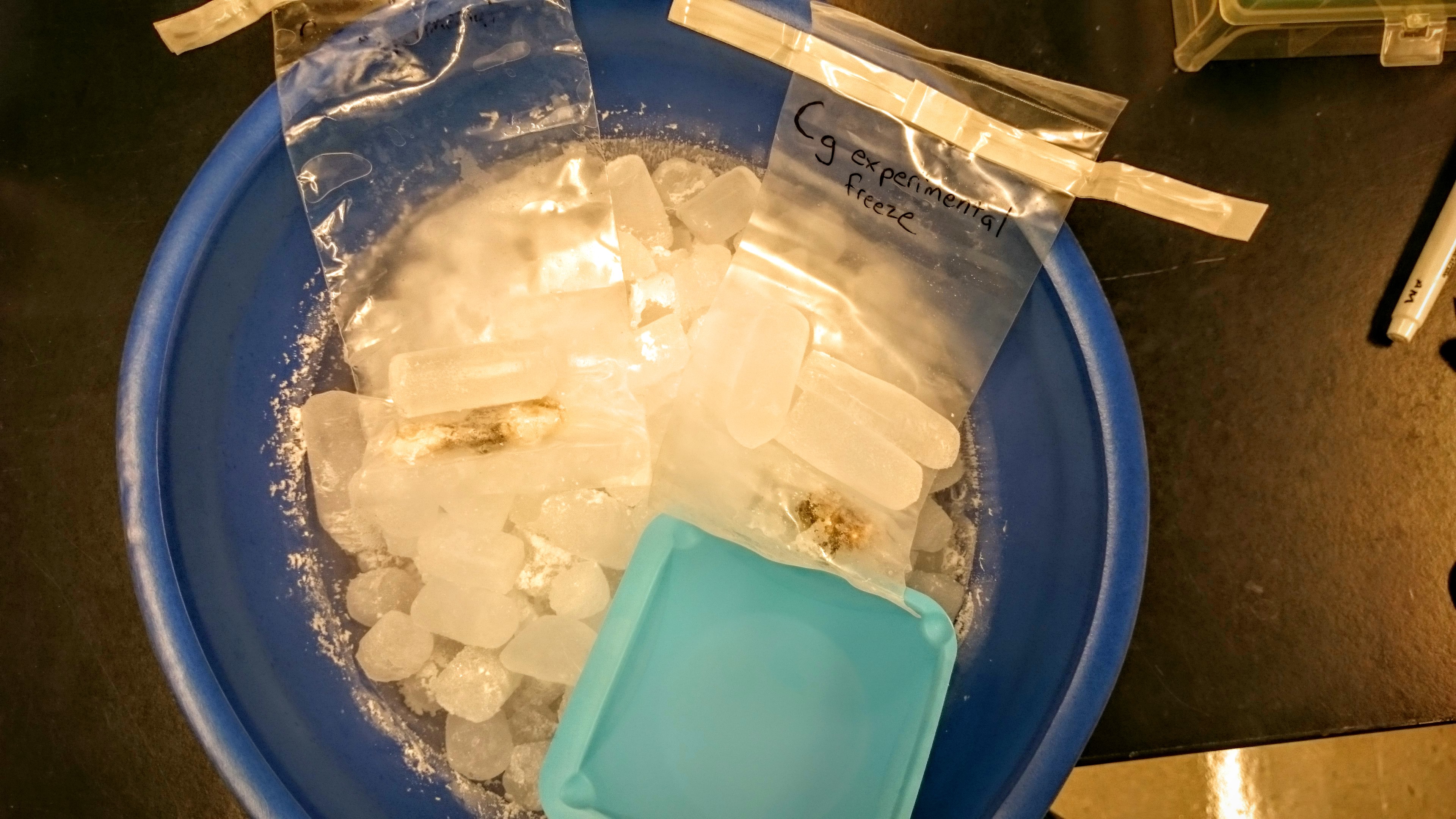 (http://eagle.fish.washington.edu/Arabidopsis/DSC_1234.jpg)
(http://eagle.fish.washington.edu/Arabidopsis/DSC_1234.jpg)
Starting with C.gigas, opening the animal was relatively easy. Granted, the animal has become brittle, but access to, and identification of, tissues ended up being pretty easy:
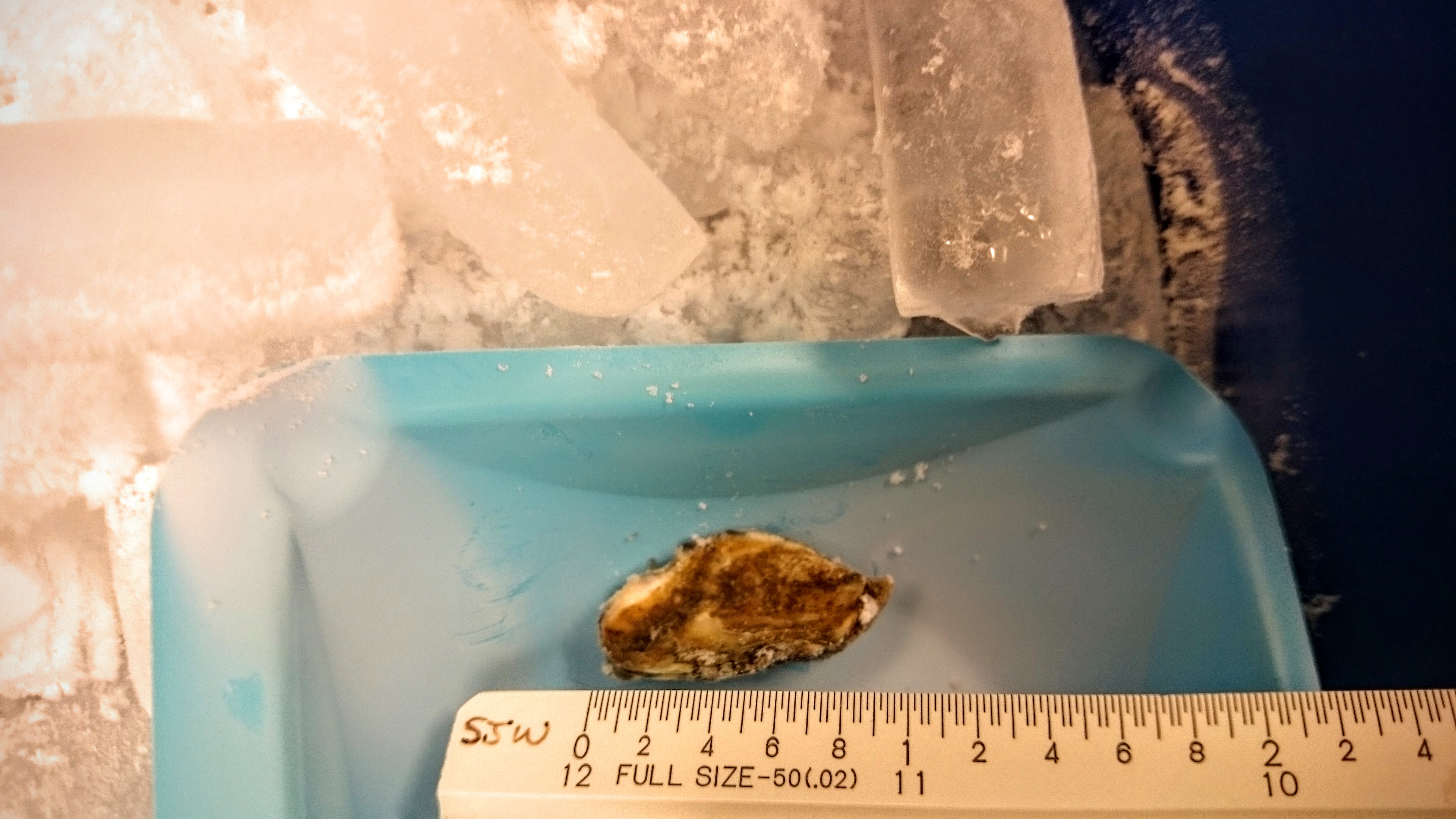 (http://eagle.fish.washington.edu/Arabidopsis/DSC_1235.jpg)
(http://eagle.fish.washington.edu/Arabidopsis/DSC_1235.jpg)
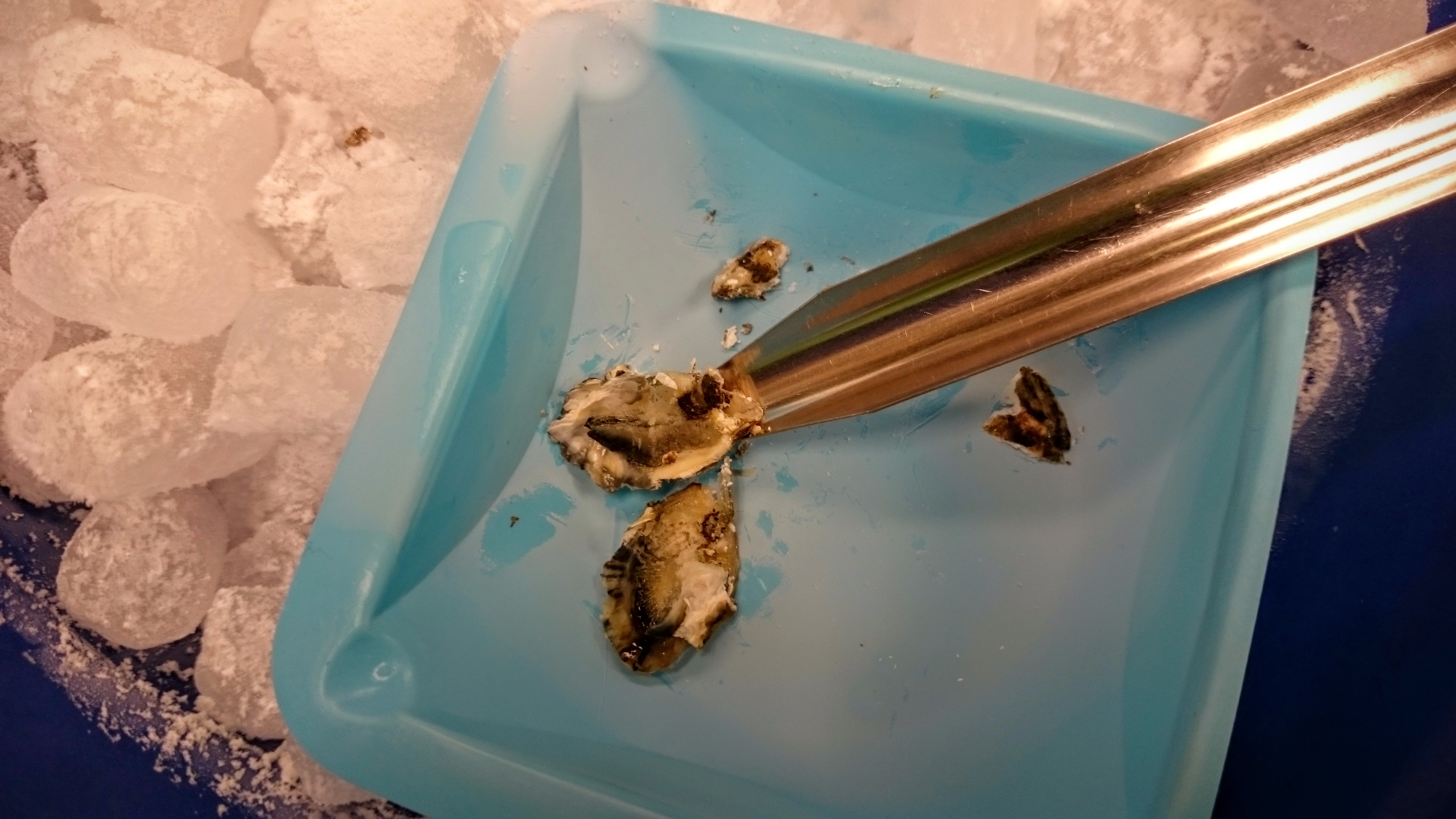 (http://eagle.fish.washington.edu/Arabidopsis/DSC_1236.jpg)
(http://eagle.fish.washington.edu/Arabidopsis/DSC_1236.jpg)
However, dissecting out just ctenidia is a lost cause. The mantle and the ctendia are, essentially, fused together in a frozen block through the oyster. Although the image below might look like part of the shell, it is not. It is strictly a chunk of frozen ctenidia/mantle tissue:
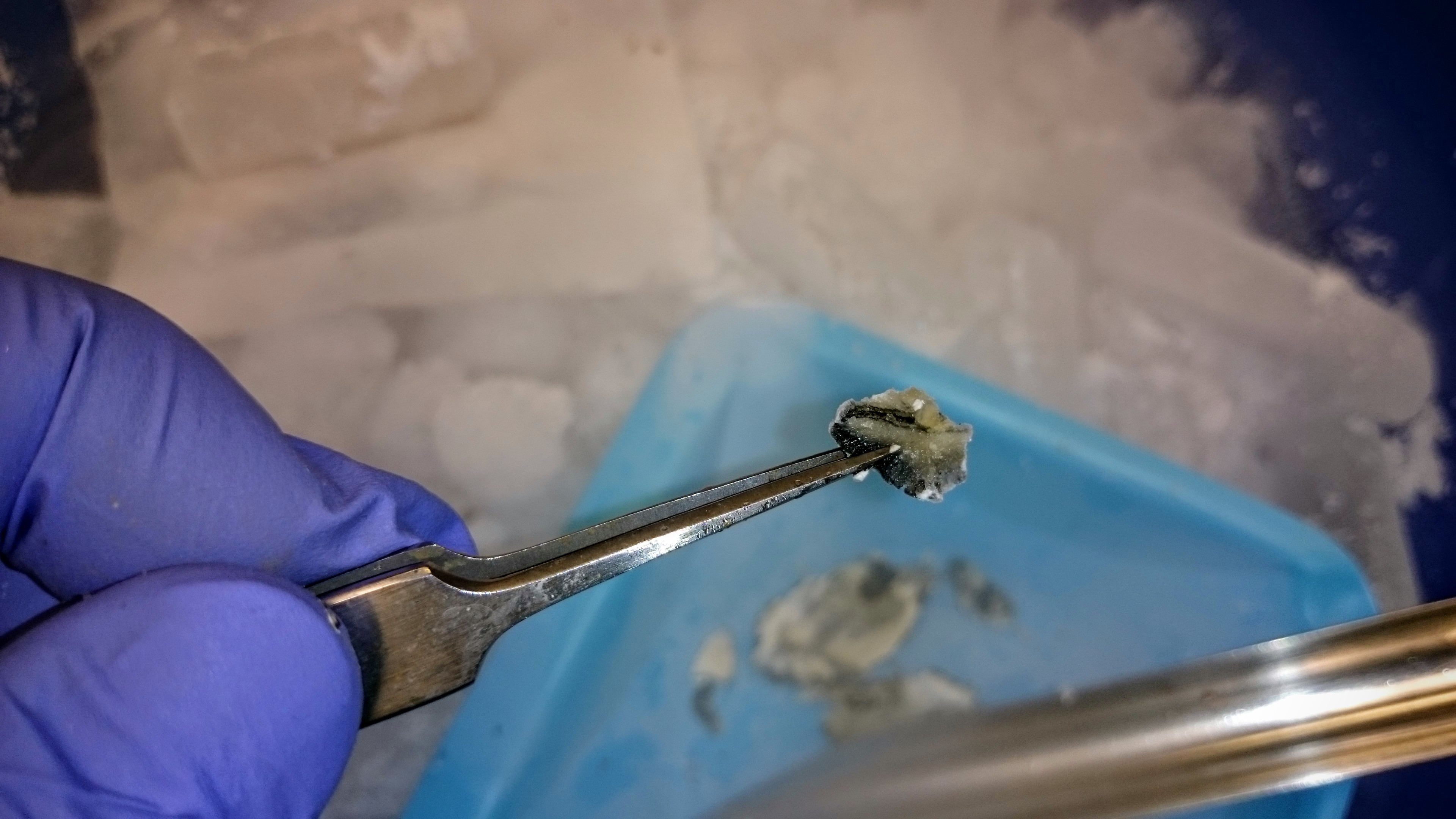 (http://eagle.fish.washington.edu/Arabidopsis/DSC_1237.jpg)
(http://eagle.fish.washington.edu/Arabidopsis/DSC_1237.jpg)
The geoduck were even more difficult. In fact, I couldn’t even manage to remove the soft tissue from the shell (for the uninitiated, there are two geoduck in the image below). I only managed to crush most of the tissue contained within the shell, making it even more impossible (if that’s possible) to identify and dissect out the ctenidia:
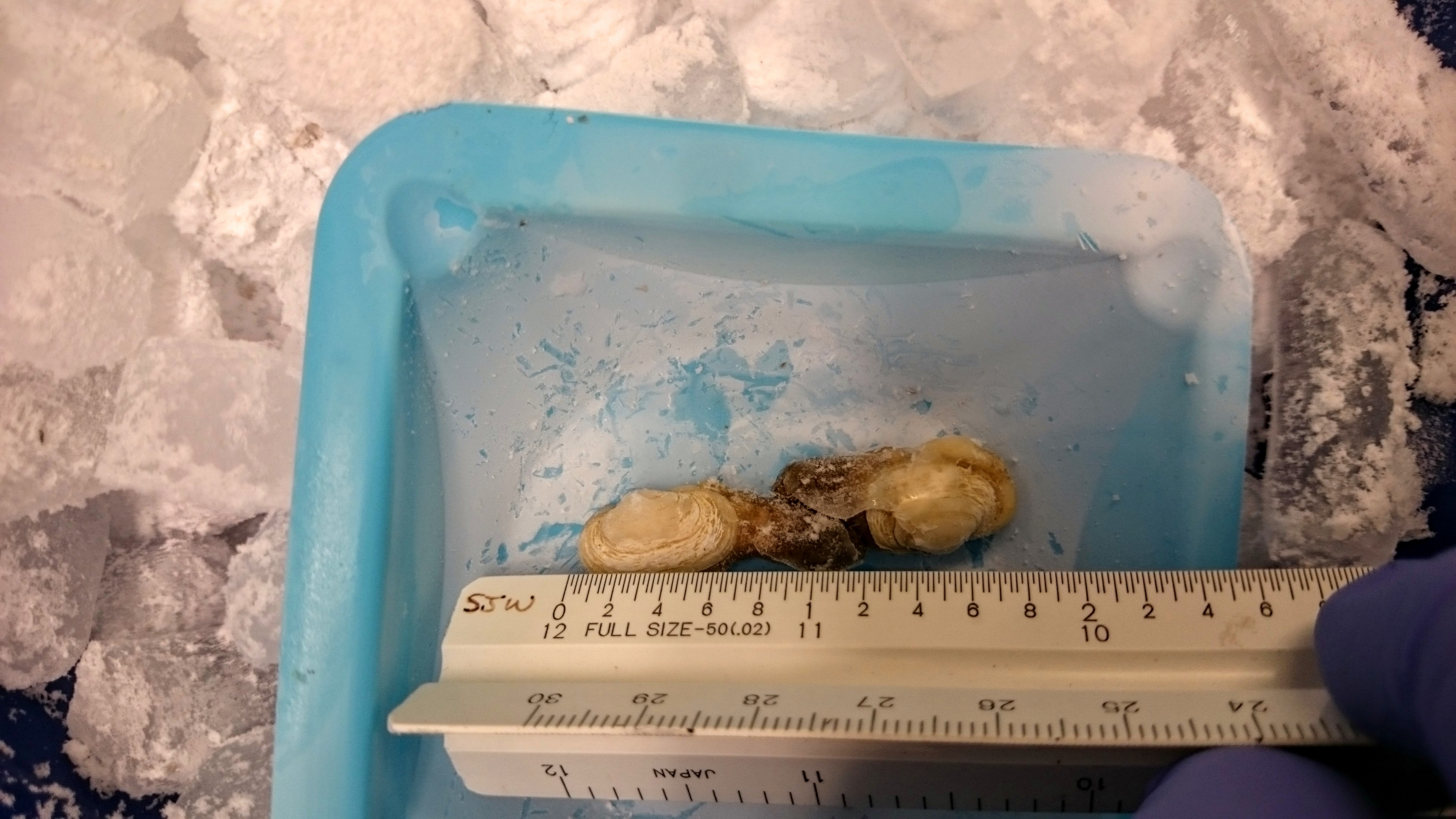 (http://eagle.fish.washington.edu/Arabidopsis/DSC_1238.jpg)
(http://eagle.fish.washington.edu/Arabidopsis/DSC_1238.jpg)
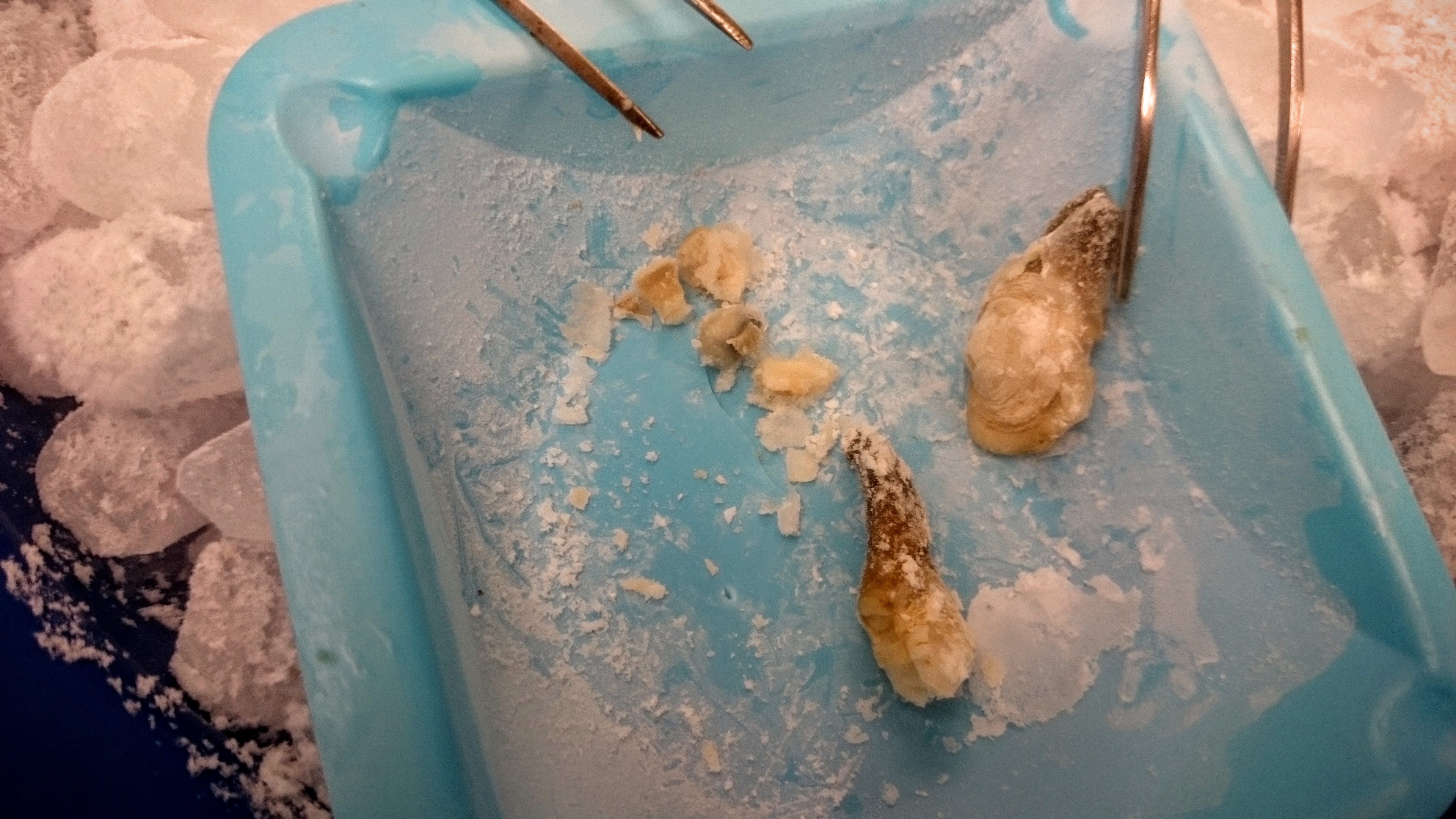 (http://eagle.fish.washington.edu/Arabidopsis/DSC_1239.jpg)
(http://eagle.fish.washington.edu/Arabidopsis/DSC_1239.jpg)